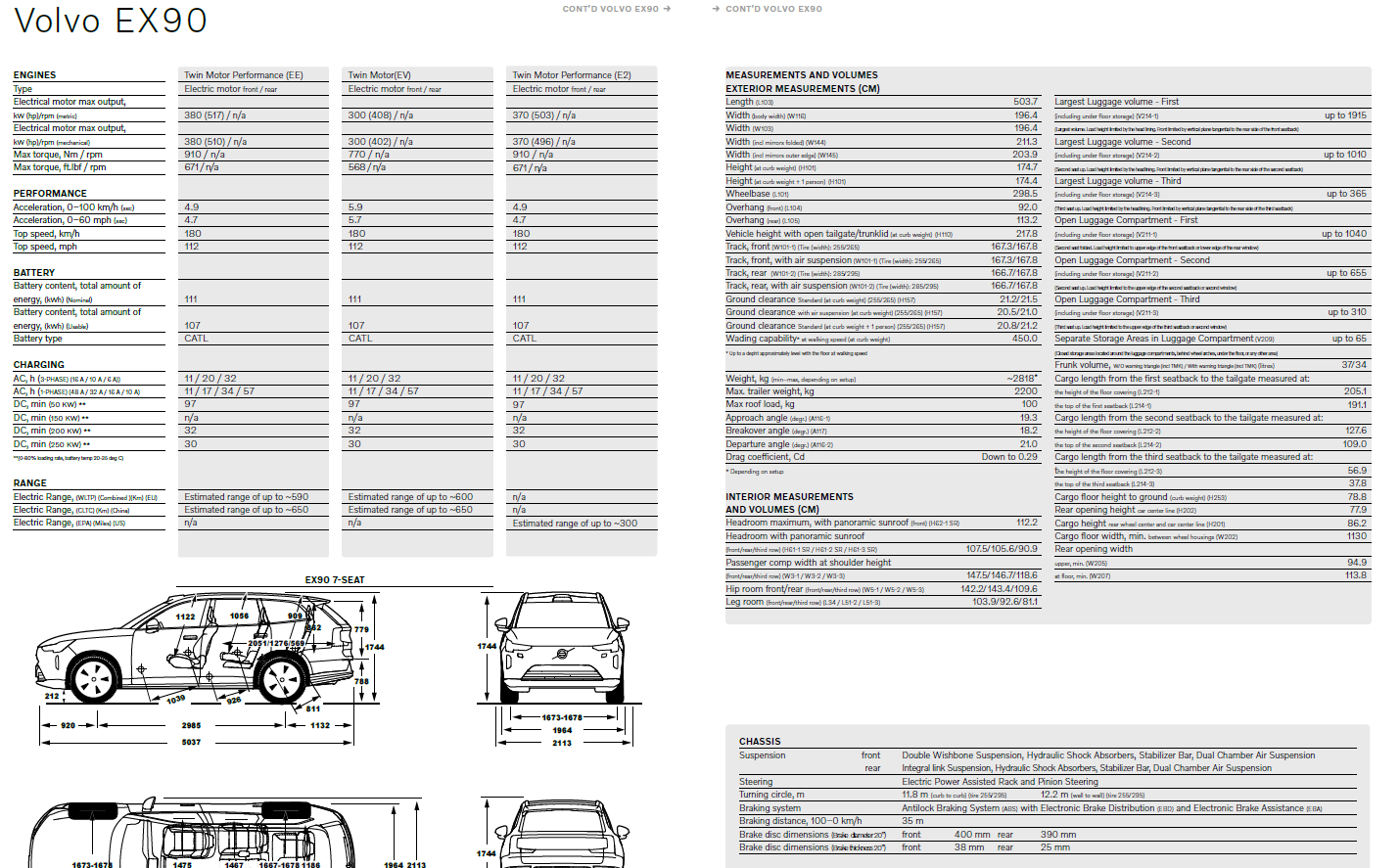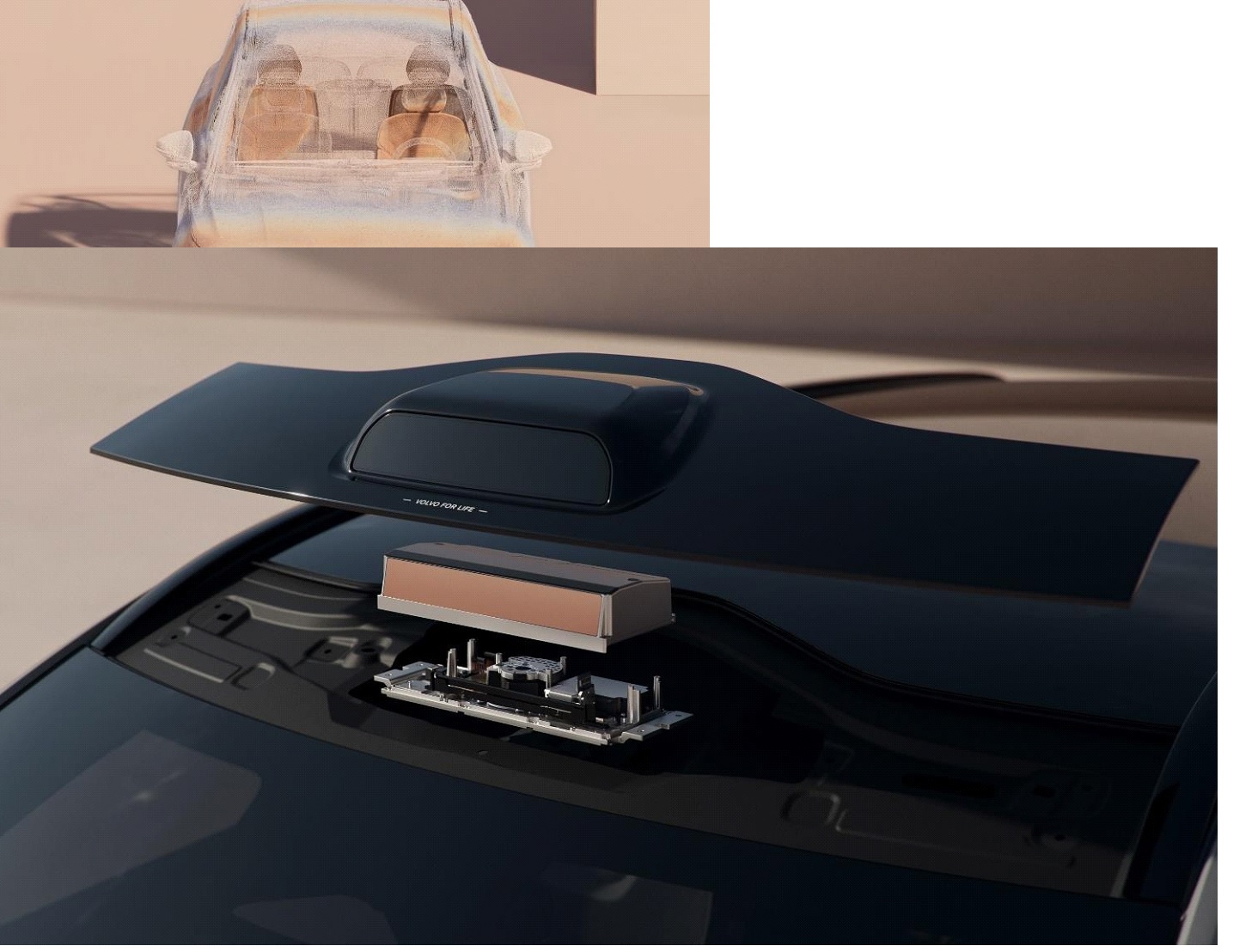By researching, learning and developing, Volvo Cars has constantly improved the crash prevention systems in our cars, delivering some of the most advanced and effective systems to date. And our work continues as we head towards our vision of Zero Collisions in new Volvo cars.
The Volvo EX90 is redefining a new era of safety for Volvo Cars. From the start, the Volvo EX90 is fitted with one of the most advanced sensor sets on the market today, which comprises of a new cutting-edge roof-mounted LiDAR sensor, five radars, eight cameras, two interior cameras and 16 ultrasonic sensors.
Combined with in-house-developed software and the car’s core computing power, these sensors have the ability to build up a highly accurate picture of the vehicle’s surroundings and crucially, improve the car’s understanding of the driver’s state, too. By combining our advanced sensors, in- house developed software and the car’s core computing power, we introduce redundancy for added safety, and aim to offer a car that can keep track of more potential hazards than we ever have before – both on the outside and inside.
Lidar – Light Detection and Ranging
The Volvo EX90 ushers in a new era of safety for the Volvo Cars brand thanks to the inclusion of lidar technology onto the car. With lidar powered by core computing and software, Volvo Cars sees severe accidents decreasing by up to 20 per cent.
Embedded in the roofline of the next EX90 and becoming standardised over time, the superior lidar technology can detect pedestrians at up to 250-metre distances and something as small and dark as a tire on a black road 120 metres ahead.
Powered by Luminar’s Iris lidar system, the sensor offers the detection range needed to unlock applications even when small targets are at long ranges. The Iris lidar system operates on the 1550nm (nanometer) wavelength and coupled with the Nvidia Orin processor – which is dedicated to computing-intense work such as vision and lidar processing – and delivering on the high safety standards set for this vehicle. It works together with the core computer, the autonomous driving software, as well as backup systems for steering and braking.
Keeping an eye on the road ahead
Volvo EX90’s high-performance lidar resolves highly precise 3D measurements, including small objects such as road debris.
The car’s safety systems can accurately see and measure distances to objects several hundred meters ahead, including in complete darkness. Lidar will be used to improve the advanced driver assistance systems as it helps detect objects and build 3D point clouds, allowing the car to build a detailed picture of its surroundings and seeing beyond human range.
Equipped with lidar and an AI-driven supercomputer as standard hardware and coupled with software updates continuously, our next generation Volvo cars will become increasingly capable to intervene as needed to help prevent collisions.
“We believe the EX90 to be the safest Volvo car to ever hit the road,” said Joachim de Verdier, head of Safe Vehicle Automation at Volvo Cars. “We are fusing our understanding of the outside environment with our more detailed understanding of driver attention. When all our safety systems, sensors, software and computing power come together, they create a preventative shield of safety around you – and you won’t even know it’s there until you need it.”
Inside The Driver Understanding system
The system makes its debut on the Volvo EX90 and complements the state-of-the-art exterior sensor set. By using its two camera sensors and the capacitive steering wheel to observe gaze and posture patterns, it understands when a driver’s mind is leaving driving behind, for example because it is focused somewhere other than on driving.
Mikael Ljung Aust, Senior Technical Leader at Volvo Cars Safety Centre, says: “The core function of our Driver Understanding System is to determine, in real time, whether your attention is on the road ahead or not. It’s that simple. By adding Driver Understanding to the equation in this way, we can make the car more attuned to you. At one end of the scale, we can take away warnings or interventions that you can do without, because we can see that you’re in control even though the situation is tight.
“At the other end, we can boost the help you really do need. This means that the proportion of times when the car warns or intervenes in situations you really need help with, as opposed to situations you’re already seeing, gets higher. And that builds trust and confidence. It’s one of Driver Understanding system’s main jobs, if not the main job; to help build trust in our collision prevention systems.”
The first Driver Understanding camera sensor is positioned off-set left on the newly designed instrument cluster and focuses directly on the driver.
The second camera sensor meanwhile is positioned in the middle of dashboard by the centre speaker stack and together with the first camera sensor, combine to provide the best possible field of vision for maximum accuracy.
By also adding active infrared sensor, the system can robustly capture minute and rapid eye movements, like rapid eye-blink rates and pupil dilation, at up to 60 FPS independent of the outside light conditions.
With basis in our patented algorithms for real-time sensing of when gaze patterns and steering behaviour show that drivers are going out of the loop, the car will be able to take appropriate action to help the driver when needed. The assistance can start with a simple warning signal that grows in volume with the severity of the situation. If the driver doesn’t respond to increasingly clear warnings, the system can manoeuvre the car gradually and safely stop in lane, sending a warning to other road users with its hazard lights and applying the brakes according to prevailing traffic conditions.
Interior radar sensing
A new world-first interior radar system from Volvo Cars feature developed by our engineers is designed to be accurate and sensitive enough to detect the tiniest movements inside the new Volvo EX90. It’s the first such feature to cover the entire interior of the car, including the trunk. Volvo Cars’ new interior radar system will first be rolled out as standard, where regulation allows, on the Volvo EX90. The feature will also be included in other forthcoming Volvo car models.
With sensors integrated in the overhead console, the roof-mounted reading lamps and the trunk of the car, the new system is the first that can detect sub-millimetre movement in the entire interior of the Volvo EX90.
Every time the car is locked, the interior radar system is activated and determines whether your car is empty of any people or pets before it allows the car to be locked. If a family member or pet is detected inside, the Volvo EX90 will remain unlocked and the car will display a reminder to check the cabin for occupants on the centre console screen.
The car’s climate system can remain on if people or animals are detected in the cabin, to improve
comfort. This can also help lower the risk of hypothermia or heatstroke.




